Vision Pro: First Impressions
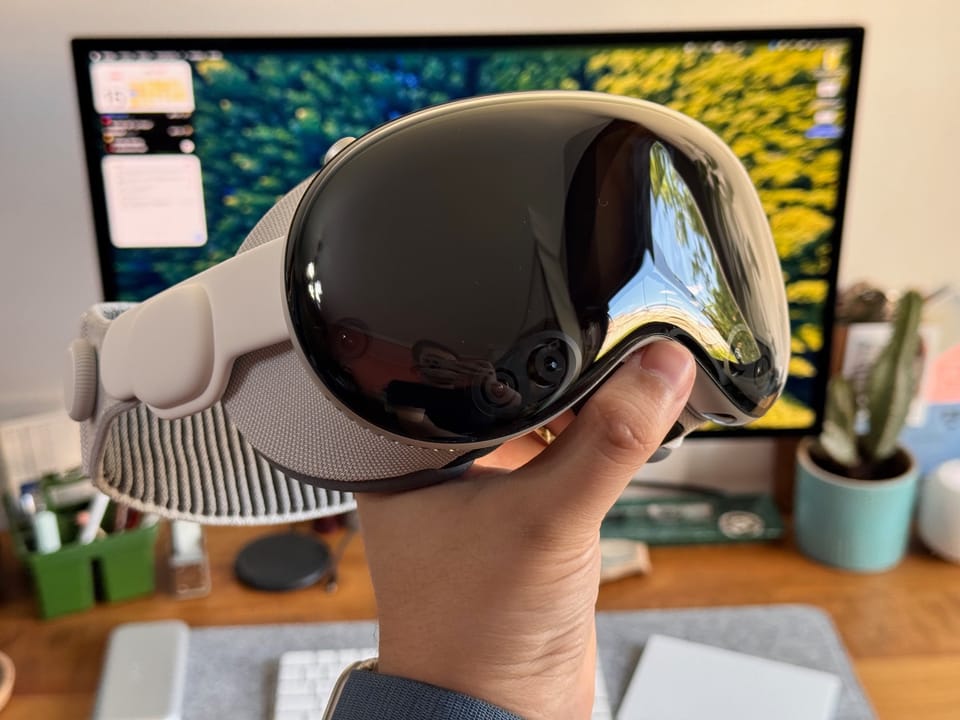
Last Friday, after almost a year of waiting, Apple put the Vision Pro on sale in some European countries. Spain wasn't among them, but after a 770 km journey and a quick visit to Bordeaux, I've finally been able to try the future of computing.
Since walking around with them on the street or wearing them for a week straight has already been done, I've decided to take advantage of this opportunity to write down my first impressions. They're not the first to be written, but after hearing so much about the Apple Vision Pro on all kinds of podcasts and blogs for so long, the truth is that I've had some surprises.
But weren't they dead?
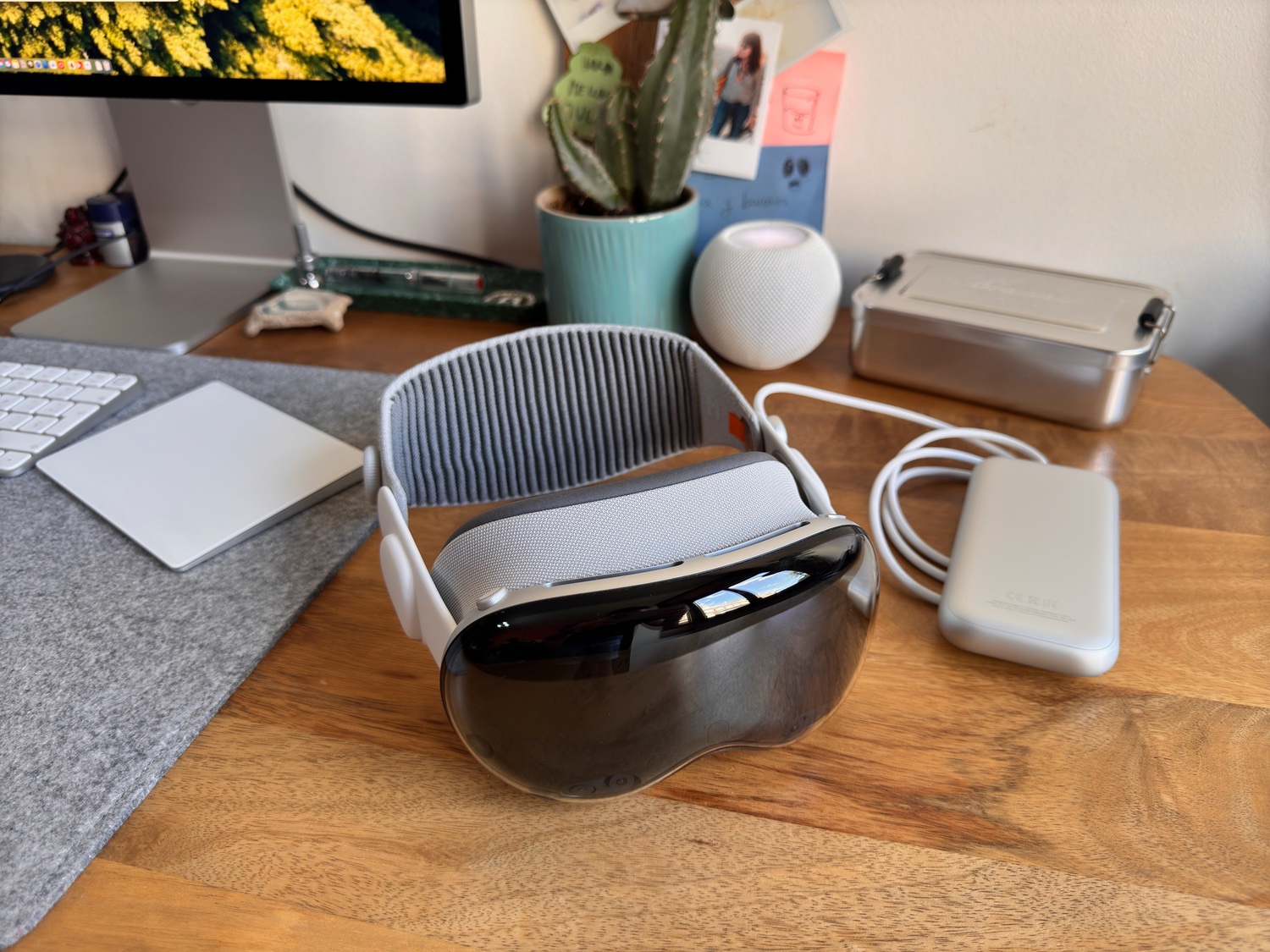
Reading the media these last few days, it seems that the Apple Vision Pro is more dead than alive, so why buy one? The truth is that we've heard that "that Apple gadget is finished" a bunch of times already. It was said at the time about the iPod, the iPhone, the iPad (which they try to kill year after year), and also about the Apple Watch, so why would it be different this time?
Jokes aside, when I saw the Vision Pro presentation last year, I had the same feeling as when I saw the original iPhone presentation. A glimpse into a possible future. A significant leap forward that requires some vision and also a bit of faith.
We don't remember it now, but that iPhone didn't even have the App Store, and beyond calling, browsing the internet, listening to music, and watching YouTube videos, it didn't do much. Although what mattered wasn't how much or how little it did, but how it did it. The touchscreen, the gestures, those animations... Clearly, it was another way of understanding computing. And time has proven it right.
However, if we look back, it's not hard to find hundreds of articles, even from Microsoft's CEO at the time, saying it would be a failure. Too expensive to be a phone. Unable to do X or Y. It didn't even have a keyboard!
With all this, I don't mean to say that Vision Pro will become the success that the iPhone has been. Of course, it won't be with this hardware or this price. But perhaps we are judging too quickly something we don't even understand yet.
And what happens when something is not fully understood is that it's very difficult to imagine its potential. If we don't use augmented reality glasses regularly, how will we know at what moments in our lives it might make sense? If we don't try to create different types of applications, how will we know which ones are the most useful?
The truth is that I'm not very clear if the Apple Vision Pro will be the cinema par excellence, if they will have the ability to work with total flexibility like a Mac, or if they will be the definitive creative tool like the iPad. But what I am clear about is that I want to learn as much as possible about spatial computing now that it's taking its first steps. So, if it becomes a successful platform, I'll be able to say that at Chubby Apps we have great experience developing digital products for it.
And with that said, let's go with the first impressions 👇
Glasses Apple-style
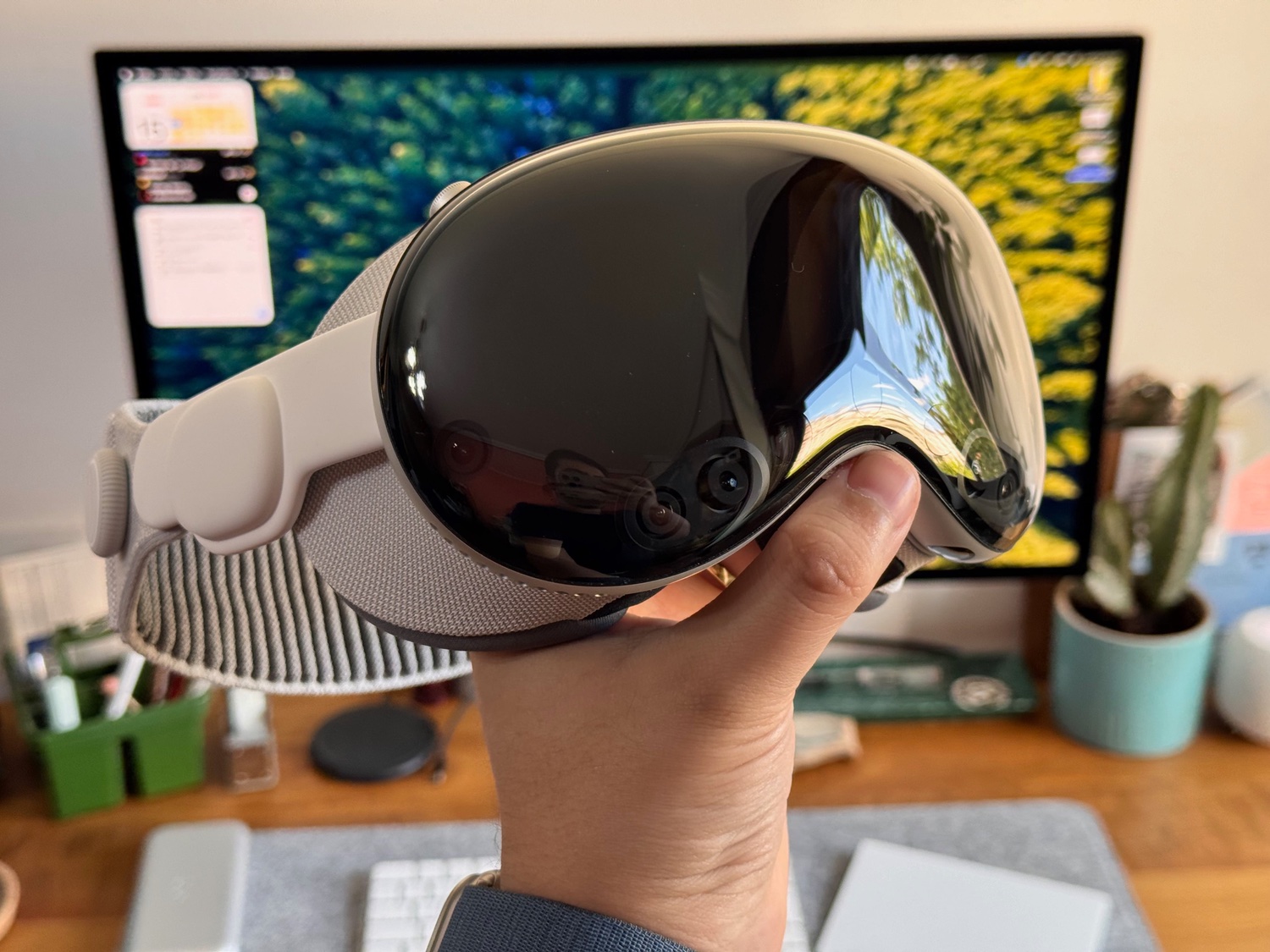
My first impression, as soon as I saw them on one of the Apple Store tables, is that they are smaller than I expected. I don't know if it's because of the photos on the web, the YouTube reviews, or other virtual reality glasses I've tried, but they have quite a modest size. They're the same size as typical ski goggles, but with more depth.
As soon as I picked them up, I also thought they didn't weigh much, but of course, it's not the same to hold them in your hands as it is to wear them on your head for a couple of hours. The weight is noticeable especially when you start turning your head or when you're more than halfway through a movie (especially if it's a long one).
Hence, the two hours of battery life that Apple announces isn't as little as it might seem at first glance. Honestly, I don't see myself wearing this for eight hours a day.
In this sense, and although they are as portable as any MacBook Pro, the truth is that I see them as a static product that will probably not leave home or the office much. Although, well, this is something that can change in the future when new, lighter, and more powerful generations come out.
As for the straps, I love the design and functionality of the braided band. Although it's true that the weight distribution is much more comfortable with the double band.
For the rest, it's everything you can expect from Apple in terms of hardware. They are a work of art in engineering. From the finishes to the materials.
VisionOS, a magic trick
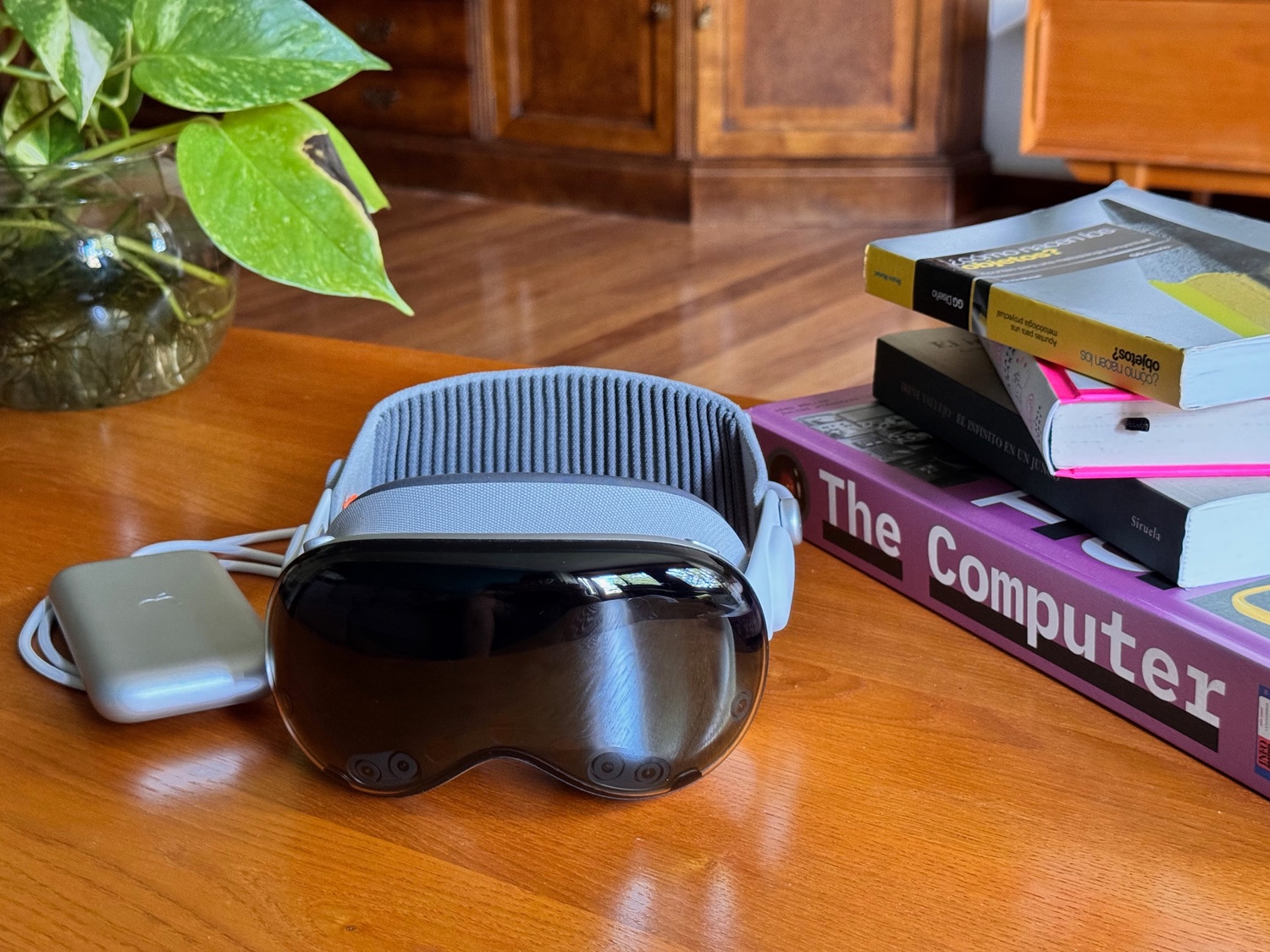
But if there's one reason why the Vision Pro seems to come from the future, it's undoubtedly because of its operating system. Just like with the original iPhone, every interaction feels like magic. As soon as you start, you feel like the glasses are reading your mind, as they highlight everything you look at. The next trick is when you join your fingers to select a photo, and the illusion is complete when you do it with both hands to zoom.
It's so incredible that it's impossible not to smile. The same WOW effect as when Steve Jobs unlocked the iPhone for the first time. By the time you get used to it, you realize that the windows cast shadows in your environment or that you can place a full-size Formula 1 car in your living room, and you're amazed again at the leap that all this represents.
It's difficult to explain, but VisionOS is an operating system in three dimensions where you can place things near or very far. All thanks to the sense of depth generated by the screens. Which is especially impressive when you start watching a movie in one of the virtual environments and the screen grows until it becomes a giant cinema.
And it doesn't matter how much you move, because the sensors and cameras are tracking the space so well that everything is where your brain expects it to be. From that screen you left hanging in the kitchen to that app you were trying out the other day on the couch.
For simple interactions, like choosing a movie, the whole system of control with your gaze and hands is more than enough, but just like the iPad, if you want to do serious things, it's best to connect a keyboard and even a trackpad to be able to control everything in a much more precise and, above all, faster way. What is a shame is that we haven't yet seen how Apple Intelligence will work in VisionOS, since being able to speak and have Siri do everything you ask would be incredible. Until then, the closest thing is that you can look at any text box and start talking.
A universe awaiting the Big Bang
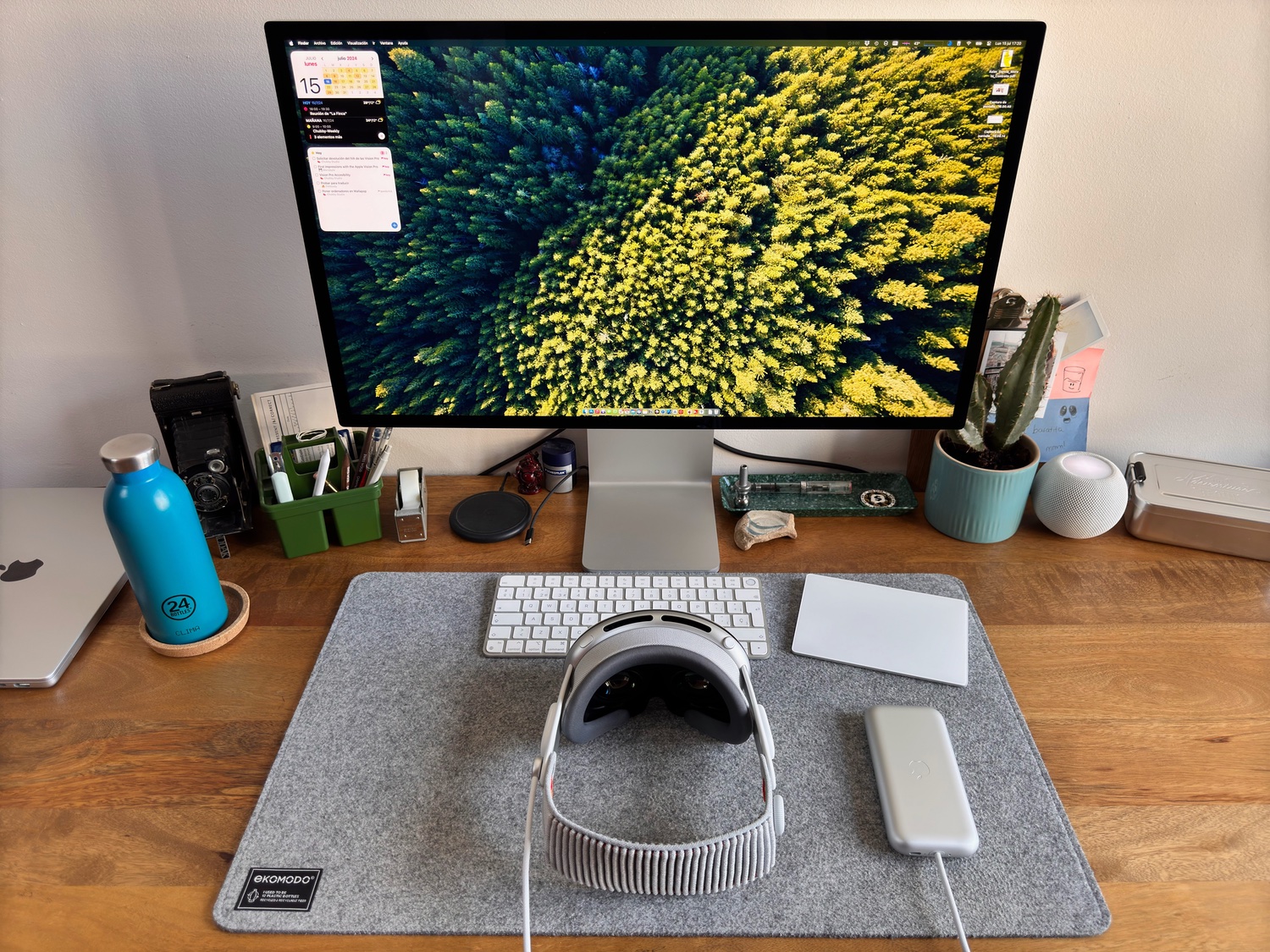
Of the whole experience, the ecosystem of applications, games, and immersive videos is, without a doubt, where Vision Pro is currently lacking. If in recent years we've gotten tired of hearing that the iPad is not good for work because it lacks X or Y features that the Mac has, I don't want to imagine what we can expect with VisionOS if Apple doesn't get its act together.
Right now, the difference between Vision Pro and the rest of the Apple ecosystem is abysmal. The number of native applications does not exceed 400 (compared to the more than 1,000,000 apps available for iOS) and among them are not the usual ones. In fact, not even with VisionOS 2 has Apple finished porting all its apps.
There are some of my favorites, like Things or Fantastical, but Ulysses, where I usually write these articles, is not there. The same can be said for Ivory, Slack, Notion, Linear, Xcode, Timery, Overcast, Reeder, Netflix... Not even apps that I make myself like Cori or FitWoody. And the truth is that I don't think it's the developers' fault. For a product that is crying out for studios to create apps and games for it, it's at least curious that until a few days ago (a year after its presentation) the only way to get a Vision Pro was to fly to the United States. And no, the simulator is not enough to create an app that makes sense for Vision Pro.
As a small development studio, it's not a battle that concerns us much, but it doesn't help that in recent months Apple has been fighting with large studios or hasn't wanted to give any incentive to port your apps to the platform.
Because if there's one thing I've realized these days, it's that apps in compatible mode don't make the grade. They're a much worse experience than using iPhone apps on the iPad. And although at first glance it might seem that the connection with the Mac can sustain a large part of the experience, in practice, it's not that much. Taking advantage of Vision Pro to work on the Mac more comfortably when you're not in your usual workspace is one thing, but having to carry the Mac with you to be able to do something with Vision Pro is something totally different.
A Spatial Computing Developer
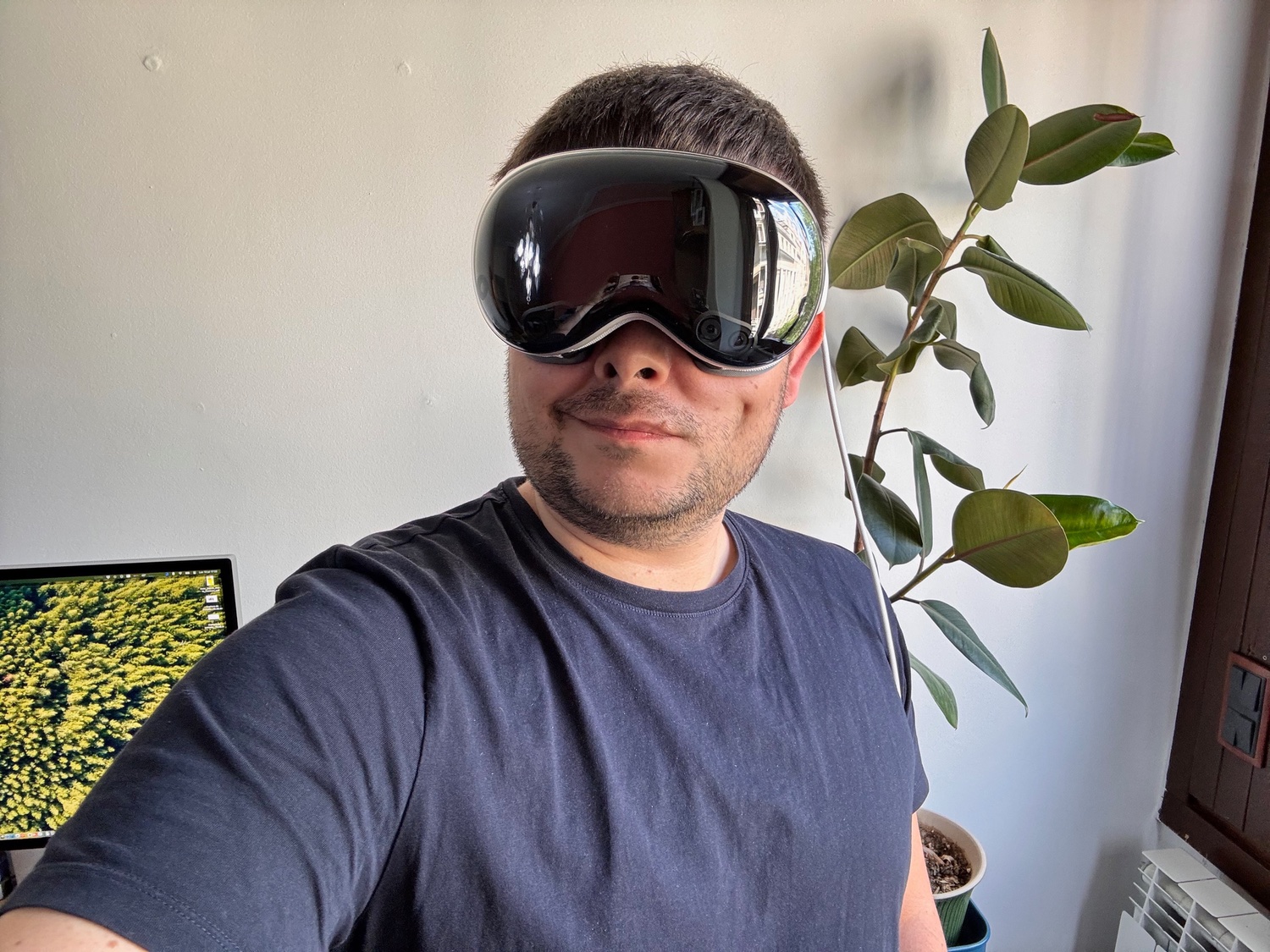
There are people who say that to develop for Vision Pro you don't need to have one, but I can already tell you that the experience of actually using them or using the simulator is not the same at all. The simulator helps you understand how the operating system works on the surface, but it doesn't teach you what the user experience is like or for what purposes it might make more sense to use Vision Pro instead of an iPad or Mac.
We're still in the familiarization phase, but even so, I can already tell you that at Chubby Apps we have a project or two in the works for the glasses. For now, I can't announce anything, but I'm sure that in the coming months I'll be sharing my experiences here.


Member discussion